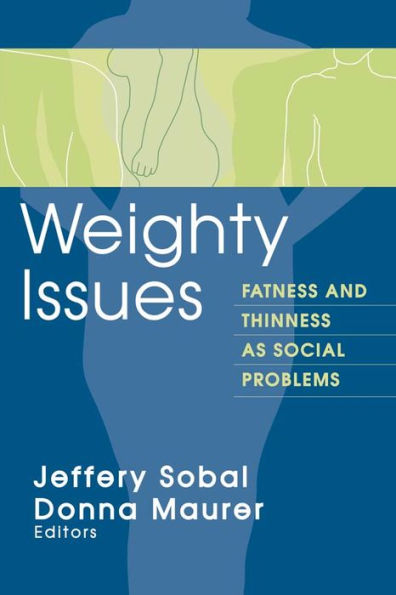Many people consider their weight to be a personal problem; when, then, does body weight become a social problem? Until recently, the major public concern was whether enough food was consistently available. As food systems began to provide ample and stable amounts of food, questions about food availability were replaced with concerns about ideal weights and appearance. These interests were aggregated into public concerns about defining people as too fat and too thin.Social constructionist perspectives can contribute to the understanding of weight problems because they focus attention on how these problems are created, maintained, and promoted within various social environments. While there is much objectivist research concerning weight problems, few studies address the socially constructed aspects of fatness and thinness.This book however draws from and contributes to social constructionist perspectives. The chapters in this volume offer several perspectives that can be used to understand the way society deals with fatness and thinness. The contributors consider historical foundations, medical models, gendered dimensions, institutional components, and collective perspectives. These different perspectives illustrate the multifaceted nature of obesity and eating disorders, providing examples of how a variety of social groups construct weight as a social problem.
"1126521410"
Weighty Issues: Fatness and Thinness as Social Problems
Many people consider their weight to be a personal problem; when, then, does body weight become a social problem? Until recently, the major public concern was whether enough food was consistently available. As food systems began to provide ample and stable amounts of food, questions about food availability were replaced with concerns about ideal weights and appearance. These interests were aggregated into public concerns about defining people as too fat and too thin.Social constructionist perspectives can contribute to the understanding of weight problems because they focus attention on how these problems are created, maintained, and promoted within various social environments. While there is much objectivist research concerning weight problems, few studies address the socially constructed aspects of fatness and thinness.This book however draws from and contributes to social constructionist perspectives. The chapters in this volume offer several perspectives that can be used to understand the way society deals with fatness and thinness. The contributors consider historical foundations, medical models, gendered dimensions, institutional components, and collective perspectives. These different perspectives illustrate the multifaceted nature of obesity and eating disorders, providing examples of how a variety of social groups construct weight as a social problem.
46.49
In Stock
5
1

Weighty Issues: Fatness and Thinness as Social Problems
260
Weighty Issues: Fatness and Thinness as Social Problems
260eBook
$46.49
$61.99
Save 25%
Current price is $46.49, Original price is $61.99. You Save 25%.
Related collections and offers
46.49
In Stock

Product Details
| ISBN-13: | 9781351328265 |
|---|---|
| Publisher: | Taylor & Francis |
| Publication date: | 09/08/2017 |
| Series: | Social Problems & Social Issues |
| Sold by: | Barnes & Noble |
| Format: | eBook |
| Pages: | 260 |
| File size: | 447 KB |
About the Author
From the B&N Reads Blog
